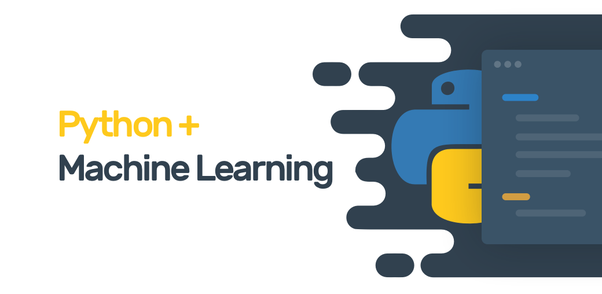Description
Introduction: Digital VLSI Design
Digital VLSI (Very-Large-Scale Integration) design refers to the process of designing digital integrated circuits (ICs) with millions or even billions of transistors on a single chip. Digital VLSI is the foundation of modern computing and electronic systems, driving innovations in microprocessors, memory, and digital devices. This training is designed to introduce participants to the concepts, tools, and techniques of digital VLSI design. It focuses on the entire design flow, from understanding the fundamentals of digital circuits to implementing and verifying them in hardware description languages (HDLs) like Verilog or VHDL.
Prerequisites for Digital VLSI Design
- Basic understanding of digital electronics: Knowledge of combinational and sequential logic circuits.
- Basic programming skills: Understanding of programming concepts (C or C++).
- Familiarity with logic gates and microprocessor architecture: is recommended.
- Basic knowledge of HDLs: (Verilog or VHDL) would be helpful.
Table of Contents (Split by Sessions):
1: Introduction to Digital VLSI Design
- What is VLSI?
- Overview of VLSI technology and applications
- Evolution from SSI, MSI, LSI to VLSI
- Digital Design Concepts
- Review of combinational and sequential circuits
- Design abstraction levels: behavioral, RTL, gate-level and physical design
- VLSI Design Flow
- The VLSI design process: front-end vs back-end design
- Session Activities:
- Introduction to design tools (e.g., Xilinx, Cadence, Synopsys)
2: Combinational and Sequential Logic in VLSI
- Combinational Logic Circuits
- Basic logic gates (AND, OR, NOT) and Boolean algebra
- Designing adders, multiplexers, decoders and encoders
- Sequential Logic Circuits
- Flip-flops, latches, registers and counters
- FSM (Finite State Machines) design
- Session Activities:
- Design and simulation of basic combinational and sequential circuits
3: Introduction to Verilog/VHDL
- HDL Overview
- Introduction to hardware description languages (Verilog Ref- System Verilog for Verification, VHDL)
- Verilog vs. VHDL: differences and similarities
- Basic Syntax and Structure
- Writing modules, ports and signals in Verilog/VHDL
- Combinational and Sequential Design in HDL
- Modeling digital logic with HDL
- Behavioral, structural and RTL modeling
- Session Activities:
- Writing and simulating Verilog/VHDL code for basic digital circuits
4: RTL Design and Coding
- What is RTL?
- Understanding Register Transfer Level (RTL) design
- Writing RTL code in Verilog/VHDL
- Designing Datapaths
- ALUs, shifters, and multiplexers at RTL level
- Control logic and FSMs in RTL
- Session Activities:
- Implementing an ALU and a simple controller in Verilog/VHDL
5: Design Optimization and Synthesis
- Logic Synthesis
- Introduction to synthesis tools (e.g., Synopsys Design Compiler)
- Translating RTL code into gate-level netlist
- Optimizing for Power, Performance, and Area (PPA)
- Techniques for reducing power consumption and area
- Performance optimization techniques in digital design
- Session Activities:
- Performing logic synthesis on RTL designs and analyzing synthesis reports
6: Timing Analysis and Clocking
- Understanding Timing in VLSI Designs
- Setup time, hold time, and propagation delay
- Clock skew and jitter
- Static Timing Analysis (STA)
- Performing STA on a synthesized netlist
- Timing closure and clock tree synthesis
- Session Activities:
- Running static timing analysis and fixing timing violations
7: Verification of Digital Designs
- Introduction to Verification
- Importance of verification in VLSI
- Functional, timing, and formal verification techniques
- Testbenches in Verilog/VHDL
- Writing testbenches for simulation
- Generating stimuli and verifying outputs
- Session Activities:
- Writing a testbench for a sequential circuit and running simulations
8: Power-Aware Design
- Power Consumption in VLSI
- Static vs. dynamic power dissipation
- Leakage power and switching activity
- Low-Power Design Techniques
- Clock gating, power gating, multi-threshold CMOS (MTCMOS)
- Voltage scaling and reducing switching activity
- Session Activities:
- Implementing clock gating and low-power techniques in an RTL design
9: Digital Design for Testability (DFT)
- Design for Testability Overview
- Importance of DFT in VLSI
- Challenges in testing complex digital circuits
- DFT Techniques
- Scan chains, Built-in Self-Test (BIST), boundary scan
- Introduction to Automatic Test Pattern Generation (ATPG)
- Session Activities:
- Adding scan chains to an RTL design and performing ATPG
10: FPGA-Based Prototyping
- Introduction to FPGAs
- FPGA architecture and applications
- Advantages of FPGA prototyping in VLSI design
- FPGA Design Flow
- Synthesis, place and route, and programming on FPGAs
- Verification and debugging on FPGAs
- Session Activities:
- Mapping an RTL design to an FPGA and testing functionality
11: VLSI Design for ASICs
- ASIC Design Flow
- Key differences between FPGA and ASIC design flows
- Front-end and back-end design for ASICs
- Physical Design Considerations
- Placement, routing, and physical verification
- Signal integrity, power distribution, and area optimization
- Session Activities:
- Introduction to physical design tools and generating a simple layout
12: Project Work and Case Study
- Comprehensive Design and Verification
- Participants work on a small digital VLSI project
- Designing and verifying a digital module (e.g., ALU, CPU core)
- Case Study
- Exploring a real-world VLSI design (e.g., a processor or memory unit)
- Review of design challenges and solutions in digital VLSI design
- Session Activities:
- Final project presentation and peer review
By the end of this training, participants will have a deep understanding of the complete digital VLSI design flow and they will gain hands-on experience in designing, synthesizing and verifying digital circuits using HDLs also mastering both RTL coding and low-level design techniques.







Reviews
There are no reviews yet.